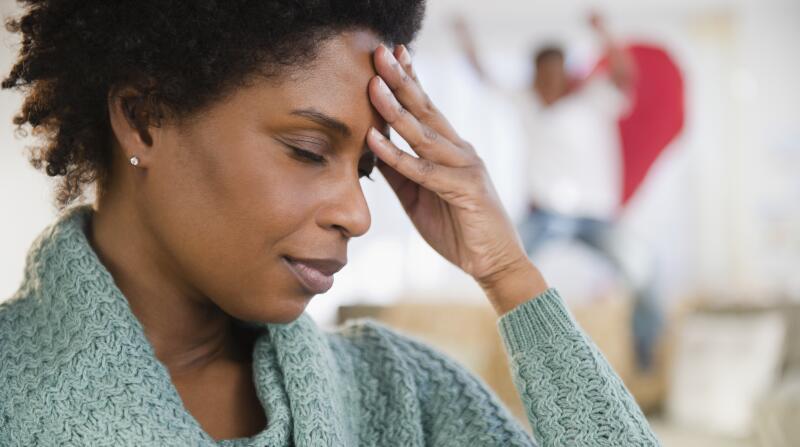7 Signs of Anemia in Women

Medically Reviewed By William C. Lloyd III, MD, FACS
Written By Evelyn Creekmore on July 2, 2021
Iron-deficiency anemia occurs when the body doesn’t make enough healthy red blood cells and the level of iron in the blood drops. Iron helps bring oxygen to your body’s tissues, and when there’s not enough of it, your body doesn’t get the oxygen it needs to function properly. Women are more likely to have iron-deficiency anemia than men because their bodies go through changes that lead them to lose more iron. About 5% of women of childbearing age develop anemia due to heavy periods, and nearly 17% of pregnant women become anemic. The signs of anemia can include everything from feeling tired to wanting to eat dirt, a disorder called pica. To make sure your body’s getting enough iron, know what symptoms to watch for.
-
 1. FatigueWhen you have fatigue, it’s hard to do everyday activities. Feelings of fatigue or weakness are among the most common signs of anemia, and anemia is the most common blood disorder in the United States. However, feeling chronically tired doesn’t automatically mean you’re anemic; many other conditions and lifestyle habits can cause fatigue. These include anxiety, depression, diabetes, low physical activity, and unhealthful eating habits. To help determine if anemia is causing your fatigue, your doctor can perform a simple physical exam and order a blood test.
1. FatigueWhen you have fatigue, it’s hard to do everyday activities. Feelings of fatigue or weakness are among the most common signs of anemia, and anemia is the most common blood disorder in the United States. However, feeling chronically tired doesn’t automatically mean you’re anemic; many other conditions and lifestyle habits can cause fatigue. These include anxiety, depression, diabetes, low physical activity, and unhealthful eating habits. To help determine if anemia is causing your fatigue, your doctor can perform a simple physical exam and order a blood test. -
 2. Chest PainWhen you don’t have enough red blood cells, your heart has to strain to move oxygen through the blood. Chest pain or shortness of breath is usually a sign of anemia that has become more severe. If you have chest pain, talk with your doctor right away. It’s a warning sign there may be a life-threatening anemia complication. Left untreated, anemia symptoms can lead to more serious conditions such as arrhythmia (irregular heartbeat) and heart failure.
2. Chest PainWhen you don’t have enough red blood cells, your heart has to strain to move oxygen through the blood. Chest pain or shortness of breath is usually a sign of anemia that has become more severe. If you have chest pain, talk with your doctor right away. It’s a warning sign there may be a life-threatening anemia complication. Left untreated, anemia symptoms can lead to more serious conditions such as arrhythmia (irregular heartbeat) and heart failure. -
-
 3. Skin and Nail ChangesIf your fingernails are brittle or your hair is becoming dry or falling out, you may need more than a cosmetic solution. Both can be signs of anemia, as enough iron isn’t reaching your hair and nails to keep them healthy. Your fingernails may also become weak, curling up at the edges and causing the middle to look like it’s been scooped out by a spoon. Your skin may also become pale or take on a more sallow (yellow) cast.
3. Skin and Nail ChangesIf your fingernails are brittle or your hair is becoming dry or falling out, you may need more than a cosmetic solution. Both can be signs of anemia, as enough iron isn’t reaching your hair and nails to keep them healthy. Your fingernails may also become weak, curling up at the edges and causing the middle to look like it’s been scooped out by a spoon. Your skin may also become pale or take on a more sallow (yellow) cast. -
 4. Mouth SorenessA deficiency of iron in your blood can make your tongue hurt, and the pain can get worse as anemia develops. You may also notice that your tongue swells and looks especially smooth. This is called “glossitis.” Your mouth may feel dry and you may have sores in the corners of your mouth. For some people, changes in their mouths are among the first symptoms of anemia.
4. Mouth SorenessA deficiency of iron in your blood can make your tongue hurt, and the pain can get worse as anemia develops. You may also notice that your tongue swells and looks especially smooth. This is called “glossitis.” Your mouth may feel dry and you may have sores in the corners of your mouth. For some people, changes in their mouths are among the first symptoms of anemia. -
 5. Changes in AppetiteIf you have anemia, you may experience a loss of appetite. Alternatively, you may have strange cravings for cold drinks, ice, or items that aren’t food, like dirt or paper. These cravings are called “picophagia” or “pica.” A vegetarian or vegan diet can put you at greater risk of iron-deficiency anemia because you’re not getting iron through red meat, fish, or poultry. Another type of anemia, called “pernicious,” can occur if you’re not getting enough vitamin B12.
5. Changes in AppetiteIf you have anemia, you may experience a loss of appetite. Alternatively, you may have strange cravings for cold drinks, ice, or items that aren’t food, like dirt or paper. These cravings are called “picophagia” or “pica.” A vegetarian or vegan diet can put you at greater risk of iron-deficiency anemia because you’re not getting iron through red meat, fish, or poultry. Another type of anemia, called “pernicious,” can occur if you’re not getting enough vitamin B12. -
 6. Restless LegsIf you have anemia, your feet and hands may feel cold, or your legs may feel uneasy when you’re trying to fall asleep. Restless legs syndrome (RLS) occurs when you have a strong, almost irresistible urge to move your legs although you don’t want to. This activity interferes with sleep during the night and affects quality of life during the day. One study showed those with anemia were nine times more likely to have RLS.
6. Restless LegsIf you have anemia, your feet and hands may feel cold, or your legs may feel uneasy when you’re trying to fall asleep. Restless legs syndrome (RLS) occurs when you have a strong, almost irresistible urge to move your legs although you don’t want to. This activity interferes with sleep during the night and affects quality of life during the day. One study showed those with anemia were nine times more likely to have RLS. -
-
 7. HeadacheWhen you don’t have enough red blood cells to carry oxygen throughout the body, less oxygen makes it to the brain. The arteries nearby swell, causing headaches. If you have anemia, you may also feel dizzy or lightheaded or have trouble concentrating. Talk with your doctor about ruling anemia out. Know that if you are diagnosed with anemia, many effective treatment options are available, including lifestyle changes, medications to increase your iron levels, and vitamin injections.
7. HeadacheWhen you don’t have enough red blood cells to carry oxygen throughout the body, less oxygen makes it to the brain. The arteries nearby swell, causing headaches. If you have anemia, you may also feel dizzy or lightheaded or have trouble concentrating. Talk with your doctor about ruling anemia out. Know that if you are diagnosed with anemia, many effective treatment options are available, including lifestyle changes, medications to increase your iron levels, and vitamin injections.
Signs of Anemia | Anemia in Women














